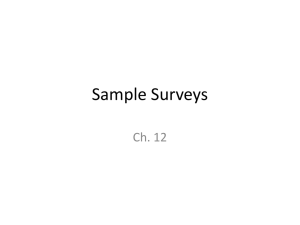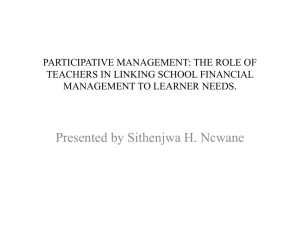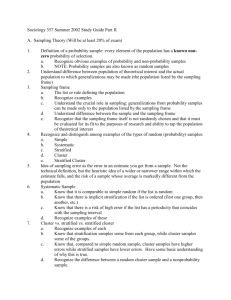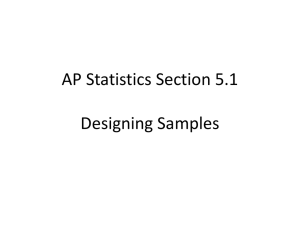Section 1-4 - Gordon State College
advertisement
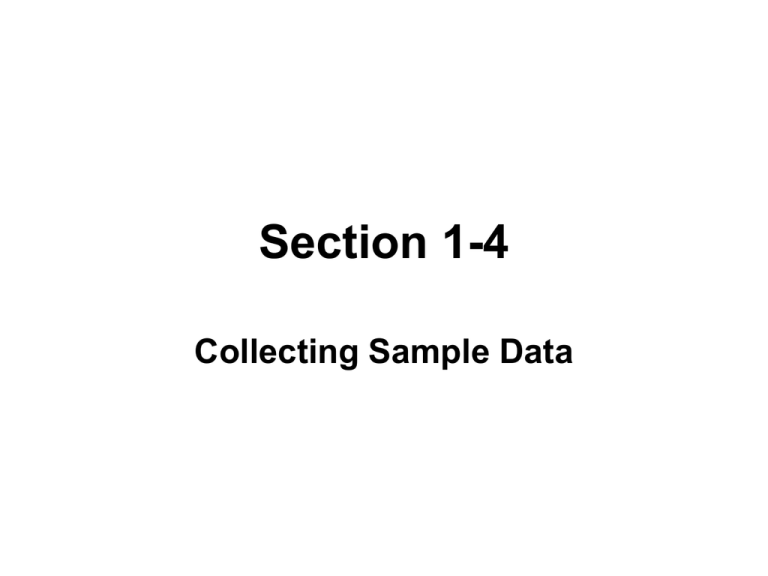
Section 1-4 Collecting Sample Data DEFINITIONS • Observational Study: observing and measuring specific characteristics without attempting to modify the subjects being studied • Experiment: apply some treatment and then observe its effects on the subjects TYPES OF OBSERVATIONAL STUDIES • In a cross-sectional study, data are observed, measured, and collected at one time. • In a retrospective (or case-control) study, data are collected from the past by going back in time (through examination of records, interviews, etc.). • In a prospective (or longitudinal or cohort) study, data are collected in the future from groups (called cohorts) sharing common factors. DESIGNING AN EXPERIMENT 1. 2. 3. 4. Identify your objective Collect sample data Use a Random Procedure that avoids bias Analyze the data and form conclusions CONFOUNDING Confounding occurs in an experiment when the experimenter is not able to distinguish between the effects of different factors. SAMPLING Sampling refers to the method used to select the subjects being studied. The methods of sampling we will study are: • • • • • Random and Simple Random Systematic Convenience Stratified Cluster RANDOM SAMPLING In a random sample members of the population are selected in such a way that each individual member has an equal chance of being selected. SIMPLE RANDOM SAMPLING A simple random sample of size n is selected in such a way that every possible sample of the same size n has the same chance of being chosen. EXAMPLE Suppose there is a class with 5 men in one row and 5 women in the other. I can get a random sample of size 5 by flipping a coin. If heads, I select the row of women. If tails, I select the row of men. Each student has an equal chance of being selected, and the sample is clearly random. However, it is not an simple random sample of size 5 because not every group of 5 students is equally likely to be selected. With the above method, I cannot get 2 men and 3 women. SYSTEMATIC SAMPLING Systematic sampling: randomly select some starting point and then select every kth element. CONVENIENCE SAMPLING Convenience Sampling: use results that are readily available. STRATIFIED SAMPLING Stratified Sampling: subdivide the population into subgroups that share the same characteristic, then draw a sample from each stratum. CLUSTER SAMPLING Cluster Sampling: subdivide the population into sections (clusters), randomly select some of the clusters, then choose ALL the members from the selected clusters. ERROR • Sampling Error (or random sampling error): the difference between a sample result and the true population result; such an error results from chance sample fluctuations. • Nonsampling Error: sample data that are incorrectly collected, recorded, or analyzed (such as by selecting a biased sample, using a defective instrument, or copying the data incorrectly). • Nonrandom Sampling Error: the result of using a sampling method that is not random, such as using a convenience sample or a voluntary response sample.




